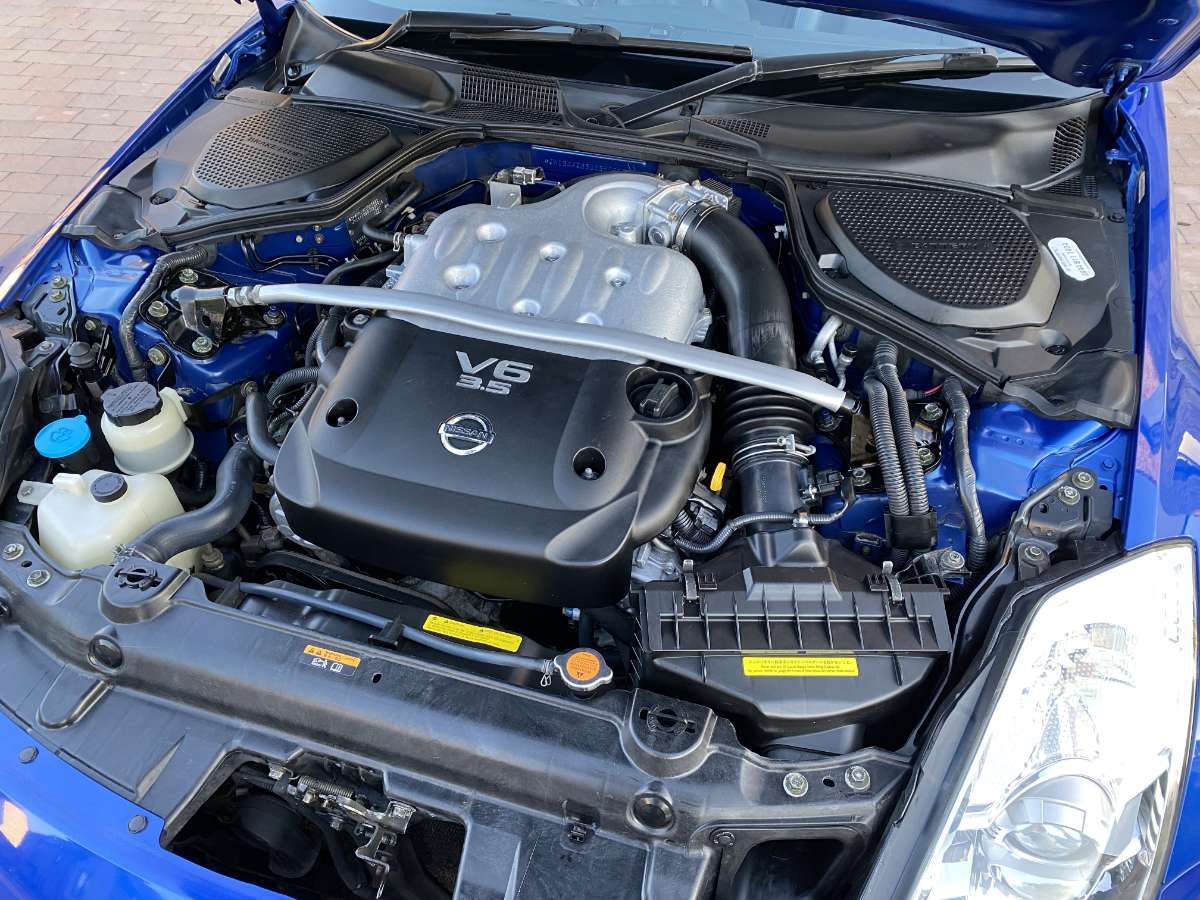What Engine Is In A 350z

Alright, let's dive deep into the heart of the Nissan 350Z: its engine. Understanding this powerhouse is crucial, whether you're planning some basic maintenance, tackling a serious repair, or just want to impress your buddies with your Z knowledge. This article will give you a solid foundation on the engine that makes this iconic sports car tick. And, just a heads-up, we have a detailed engine diagram available for download to help you visualize everything we're discussing.
The Heart of the Z: The VQ35DE (and VQ35HR) Engine
The 350Z primarily came with two variations of Nissan's award-winning VQ family of engines: the VQ35DE and, later, the VQ35HR. While both share a similar architecture and displacement, there are significant differences between them. Knowing which one you have is important for sourcing parts and understanding potential issues.
Purpose: Why This Knowledge Matters
Knowing your engine's internals is paramount for several reasons:
- Maintenance and Repairs: Proper diagnosis and repair rely on understanding how the engine's systems function.
- Performance Modifications: If you plan to modify your 350Z for more power, you need to know the engine's limits and how different components interact.
- Troubleshooting: Recognizing common issues and their causes can save you time and money on repairs.
- General Knowledge: Simply understanding the mechanics of your car enhances your ownership experience.
Key Specs and Main Parts (VQ35DE)
Let's start with the VQ35DE, found in earlier 350Z models (2003-2006):
- Configuration: 3.5-liter (3498cc) V6
- Valve Train: DOHC (Dual Overhead Camshaft), 4 valves per cylinder (24 valves total)
- Bore x Stroke: 95.5 mm x 81.4 mm
- Compression Ratio: 10.3:1 (typically)
- Fuel System: Sequential multi-port fuel injection (MPFI)
- Power Output: Typically 287-300 hp (depending on the model year and specific tuning)
- Torque Output: Typically 274 lb-ft
Main Components:
- Cylinder Block: The foundation of the engine, housing the cylinders and crankshaft. Usually made from aluminum alloy.
- Cylinder Heads: Sit atop the cylinder block, containing the valves, camshafts, and combustion chambers.
- Pistons: Move up and down within the cylinders, converting combustion pressure into mechanical energy.
- Connecting Rods: Connect the pistons to the crankshaft.
- Crankshaft: Converts the reciprocating motion of the pistons into rotational motion.
- Camshafts: Control the opening and closing of the intake and exhaust valves.
- Intake Manifold: Distributes air to the cylinders.
- Exhaust Manifold: Collects exhaust gases from the cylinders.
- Throttle Body: Controls the amount of air entering the engine.
- Fuel Injectors: Spray fuel into the intake ports or directly into the cylinders (in later models).
- Ignition Coils: Provide the high-voltage spark needed to ignite the air-fuel mixture.
Key Specs and Main Parts (VQ35HR)
The VQ35HR (High Revolution), found in later 350Z models (2007-2008), represents a significant upgrade:
- Configuration: 3.5-liter (3498cc) V6
- Valve Train: DOHC (Dual Overhead Camshaft), 4 valves per cylinder (24 valves total) with CVTCS (Continuously Variable Valve Timing Control System) on both intake and exhaust camshafts.
- Bore x Stroke: 95.5 mm x 81.4 mm
- Compression Ratio: 10.6:1
- Fuel System: Sequential multi-port fuel injection (MPFI)
- Power Output: 306 hp
- Torque Output: 268 lb-ft
Key Differences from VQ35DE:
- Dual Intake System: Improves airflow and throttle response.
- Higher Redline: Allows for higher RPMs and increased power output.
- Improved Cylinder Head Design: Enhances airflow and combustion efficiency.
- Stronger Connecting Rods: Can handle higher RPMs and loads.
How It Works: The Four-Stroke Cycle
Both the VQ35DE and VQ35HR operate on the principle of the four-stroke internal combustion engine:
- Intake: The piston moves down, creating a vacuum in the cylinder. The intake valve opens, allowing air (and fuel in MPFI systems) to enter.
- Compression: The piston moves up, compressing the air-fuel mixture. Both intake and exhaust valves are closed.
- Combustion: The spark plug ignites the compressed air-fuel mixture, creating a rapid expansion of gases that pushes the piston down.
- Exhaust: The piston moves up, pushing the exhaust gases out of the cylinder through the open exhaust valve.
This cycle repeats continuously, converting the chemical energy of the fuel into mechanical energy to power the car.
Real-World Use: Basic Troubleshooting
Here are a few common problems you might encounter and how to approach them:
- Rough Idle: Could be caused by a vacuum leak, faulty spark plugs, a dirty throttle body, or a malfunctioning mass airflow sensor (MAF).
- Loss of Power: Could be due to a clogged air filter, a failing fuel pump, or a problem with the ignition system.
- Engine Knocking: Often caused by using low-octane fuel or a problem with the knock sensor.
- Oil Leaks: Common areas for leaks include the valve covers, oil pan, and front and rear main seals.
Remember to always use a diagnostic scan tool to check for error codes, which can provide valuable clues about the source of the problem.
Safety: Highlight Risky Components
Working on an engine can be dangerous. Be especially careful when dealing with:
- Fuel System: Fuel is highly flammable. Disconnect the battery and take precautions to prevent spills.
- Electrical System: High voltage is present in the ignition system. Disconnect the battery before working on these components.
- Hot Surfaces: The exhaust system and engine components can get extremely hot. Allow the engine to cool completely before working on it.
- Rotating Parts: Keep hands and clothing away from rotating parts, such as the crankshaft and camshafts.
- Lifting Heavy Objects: Use proper lifting equipment when removing or installing heavy components, such as the engine block or cylinder heads.
Always wear appropriate safety gear, including eye protection and gloves. And if you are not comfortable with a repair, seek the help of a professional mechanic.
Finally, remember that this is a general overview. Each engine component has its own intricacies and potential issues. Now you are ready to download the engine diagram file.
